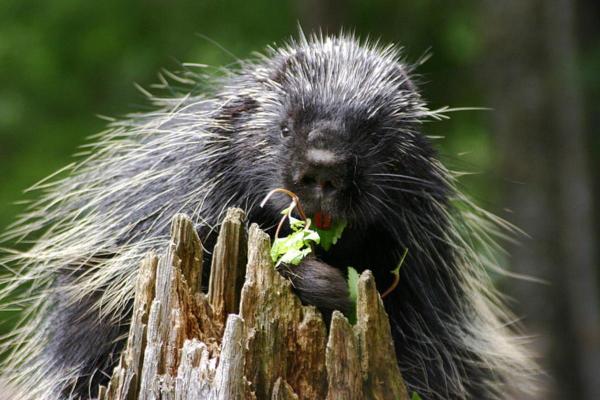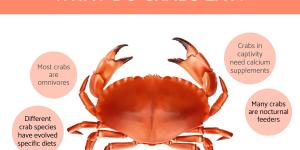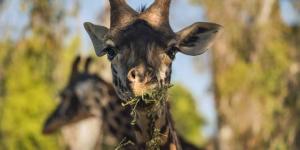What Do Porcupines Eat?


Porcupines, with their spiky exteriors and intriguing demeanor, captivate the curiosity of wildlife enthusiasts and nature lovers alike. These remarkable creatures have evolved to thrive in various habitats around the world, displaying unique adaptations to their environments. One key aspect of porcupine biology is their diet—a crucial element that shapes their behavior, habitat preferences, and ecological role.
In this article, we delve into the dietary habits of porcupines, exploring their food preferences and unraveling the question of what do porcupines eat?
Dietary habits of porcupines
Porcupines are herbivorous mammals found in various regions across the Americas, Europe, Africa, and Asia. Their diet consists primarily of plant material, and they have adapted to consume a wide range of vegetation to meet their nutritional needs.
Porcupines are known for their ability to climb trees, and they often feed on the bark, twigs, and leaves of trees and shrubs. They have sharp incisor teeth that enable them to gnaw on woody plant material, and their strong jaws and digestive system allow them to break down cellulose found in plant cell walls.
The specific plant species consumed by porcupines can vary based on their habitat and geographical location. They may feed on a variety of trees, including conifers such as pine, spruce, and fir, as well as deciduous trees like aspen, willow, and maple. They may also consume herbaceous plants, grasses, and agricultural crops if available in their environment.
Porcupines are selective feeders and may have preferences for certain plant species or parts of plants. They may favor the inner bark of trees, as it tends to be more nutritious and easier to digest. They also consume twigs, buds, leaves, and even fruits when available.
In some cases, porcupines may exhibit opportunistic feeding behavior. They have been known to consume carrion or scavenge on bones for additional nutrients, especially during periods when their preferred plant food sources are scarce.
Porcupines have certain adaptations that facilitate their herbivorous diet. Their incisor teeth continue to grow throughout their lives, allowing them to cope with the constant wear from chewing on tough plant material. They also have specialized digestive systems that help break down cellulose with the aid of bacterial fermentation in their large intestine.
It's important to note that while porcupines are primarily herbivorous, there have been rare instances of porcupines consuming animal matter. However, these instances are exceptions rather than the norm, and the vast majority of their diet consists of plant material.
Do not miss the following article, where we explain how do porcupines defend themselves.
What do baby porcupines eat?
Baby porcupines, known as porcupettes, have specific dietary needs as they grow. They initially rely on their mother's milk for nourishment during their early stages of life. The milk provides them with essential nutrients for growth and development. As porcupettes mature, they gradually transition from a milk-based diet to solid foods. This usually begins around three to four weeks of age.
Porcupettes start exploring soft vegetation such as tender leaves, buds, and shoots as they grow older. They gradually expand their diet and begin to gnaw on bark, similar to adult porcupines. Gnawing on bark helps exercise their teeth and facilitates the transition to a diet that closely resembles the adult porcupine's herbivorous feeding habits.
While they start exploring solid food at a relatively early age, their mother's milk continues to be an important source of nutrition until they are fully weaned. Weaning typically occurs around two to three months of age. It's critical to note that porcupettes rely on their mother's guidance in finding appropriate food sources and learning about their dietary preferences.
Be sure to check this other article, where we explain the differences between hedgehogs and porcupines.

What do adult porcupines eat?
Adult porcupines have a primarily herbivorous diet that is centered around consuming plant material. Here's an expanded look at what adult porcupines eat:
- Bark: bark is a major component of the porcupine's diet. Porcupines are equipped with strong incisor teeth that continuously grow throughout their lives. These teeth allow them to gnaw on tree bark, primarily from a variety of tree species. They often target the inner bark, known as cambium, which is more nutritious and easier to digest than outer bark. By consuming bark, porcupines obtain essential nutrients and minerals.
- Twigs and leaves: adult porcupines feed on the tender twigs, leaves, and buds of various trees and shrubs. They consume the foliage of both deciduous and coniferous trees, selecting those that are easily accessible and rich in nutrients. During the spring and summer seasons, when vegetation is abundant, porcupines rely heavily on these sources for sustenance.
- Roots and bulbs: some porcupine species exhibit a behavior known as "rooting." They use their strong claws to dig into the soil and access the roots and bulbs of specific plants. This behavior allows them to diversify their diet and consume additional nutrients found underground. Porcupines may target plants such as dandelions, wild onions, and other root vegetables.
- Fruits and vegetation: depending on the availability, porcupines may include fruits, seeds, and a variety of vegetation in their diet. This can encompass berries, nuts, grasses, and agricultural crops if they are present in their habitat. Fruits provide a source of sugars and additional nutrients, while seeds and vegetation contribute to their overall dietary diversity.
- Carrion (occasionally): while porcupines are primarily herbivorous, there have been rare instances of porcupines consuming carrion or scavenging on bones. These cases typically occur during periods of food scarcity when their preferred plant food sources are limited. Consuming carrion allows porcupines to obtain additional nutrients and sustain themselves until their preferred food sources become available again.
The specific plant species consumed by porcupines can vary based on their habitat, geographical location, and seasonal availability. They may exhibit preferences for certain plants or parts of plants, which can be influenced by their nutritional requirements and taste preferences.
Do not miss the following article on herbivores, their main characteristics, behavior, and habits.

If you want to read similar articles to What Do Porcupines Eat?, we recommend you visit our Healthy diets category.
- Animal Diversity Web. (2020). Available at: https://animaldiversity.org/







